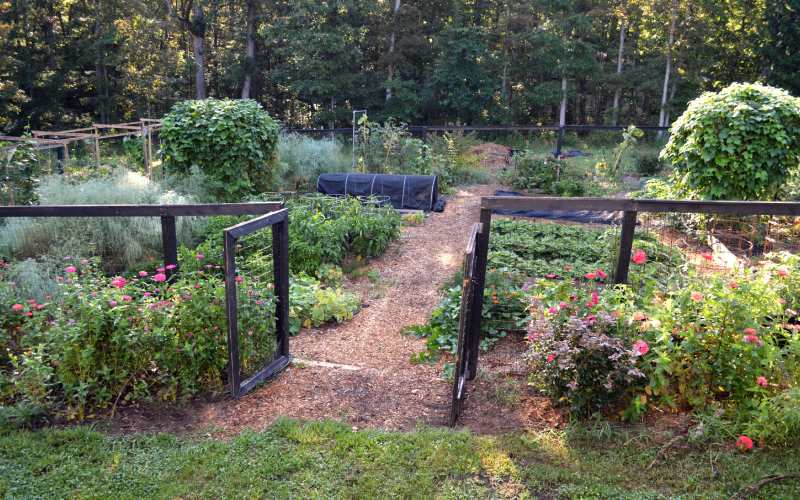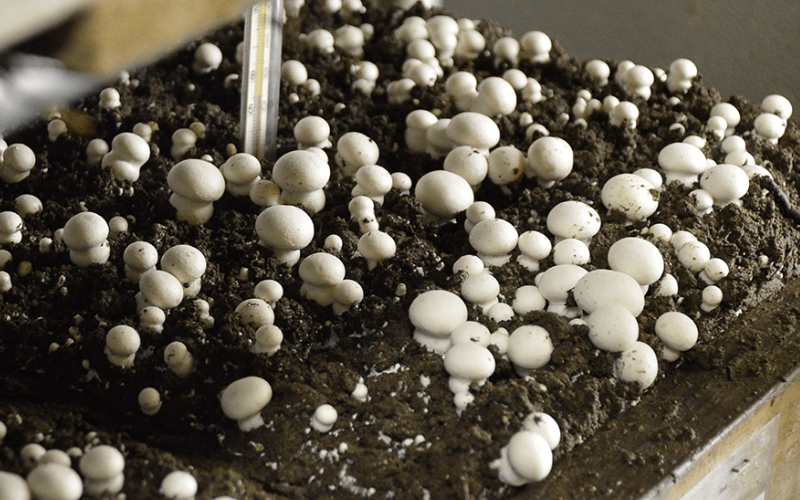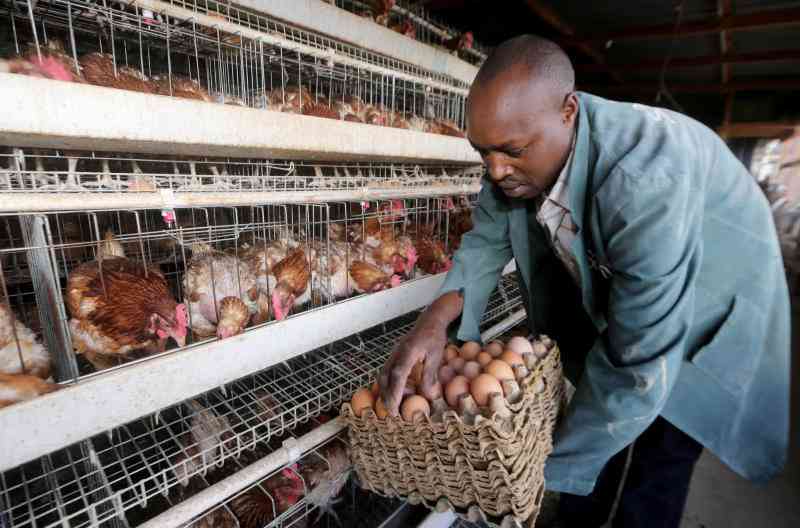
The Kenyan breadbasket belt – running from Western into the Rift Valley and then Central Kenya – is legend mostly for maize production.
Kenyan farmers have therefore been traditionally inclined to farm maize and common food crops such as beans, potatoes and leafy vegetables.
But in recent years a few smart farmers broke away from these traditions and are earning in top dollar from taking up less common types of farming.
These farmers decided to try their luck with high value crops, says George Mbakaya, an agronomist and a consultant in sustainable agriculture and innovation.
“High value crops yield way higher (in harvest volumes and revenue) in comparison to seed planted,” Mbakaya says.
Likewise, a few non-crop types of farming have provided the smart farmers with steady streams of revenue that dwarf earnings for farmers who have stuck with traditional food crops and cash crops.
Here are some great ideas that don’t need a big piece of land to venture into.
1. Garlic Farming
What you should know:
According to the Horticultural Crops Directorate (HCD), Kenya produces 2,000 metric tonnes of garlic annually. This represents about half of demand locally. Kenya is therefore a net importer of garlic. Garlic takes approximately four months – from planting to harvest – in the field.
Moses Githaiga left hawking to farm garlic eight years ago. Today, he runs Saumu Centre Ltd – an enterprise that cuts across from garlic farming to development of propagation materials.
Githaiga has had immense success farming garlic. He says: “Garlic mostly requires high rainfall. It can grow very well in many parts of Kenya.”

Key investments:
Githaiga has grown garlic on 5 acres this season. He says: “I grow between 200 and 300kg of garlic cloves on one acre. A kg of cloves costs Sh450.” This amounts to Sh135,000.
On one acre, usually, Githaiga says he would need 8 sacks of fertiliser – each going for Sh3,000. He spends Sh10,000 on pesticides and another Sh10,000 on folia feeds.
Labour costs for weeding the field is Sh3,000 – done three times before harvesting. In total, on an acre, needs an average investment amounting to Sh250, 000 (on the higher side).
On a quarter of an acre, this would be about Sh62,500.
Projected income:
Come harvest time – four months later – Githaiga reaps an average of 6,000 Kg per acre. Due to the fact that garlic supply does not meet demand, retail price for garlic has steadied at Sh200 per kilogramme.
This amounts to Sh1.2 million. On a quarter of an acre this would be Sh300,000.
Expected challenges:
Garlic requires a constant supply of water. It would therefore do well in high rainfall areas or under irrigation.
The crop’s most challenging pests are thrips. Rust and blight are the most common diseases that affect garlic. But with pesticides, Githaiga says, these should be very much under control.
2. Mushroom Farming
What you should know:
Present data by National Farmers Information Service (NAFIS) Kenya produces 500 tonnes of mushrooms per year.
Of the 500, about 476 tons are button mushroom, yet the annual demand is 1,200 tonnes. Demand outstrips supply.
According to Mbakaya, mushrooms are the ‘easiest’ to cultivate. “They are grown in an enclosure – like a mud house – which is like a controlled environment and therefore less susceptible to pests and disease,” he says.

Key investments:
Mushrooms are grown in enclosures. John Muchura has been farming mushrooms since 2012.
“Currently I have five enclosures measuring 15ft by 20ft,” he says. “This is the ‘field’ unit for growing mushrooms.”
The enclosure can be a brick-walled house. Or, like in the case of Muchura, a mud walled and grass thatched house.
“If you have masonry skills you can build this unit by yourself or hire skilled labour at a cost,” he says.
The medium for growing mushrooms (referred to as substrate) is prepared and treated against pest and disease – a process that lasts about 30 days.
Mushrooms substrates readily available in Kenya are wheat straws and sugarcane bagasse – which one can get for free depending on proximity to a wheat growing or sugar cane growing area.
Mbakaya says preparation of the substrate is meant to infuse it with nutrients and kill off pests and disease causing pathogens. After spooning (planting) the mushrooms cannot be sprayed with pesticides or anything else as they are very sensitive to such interference.
A farmer would need 15 litres of spores (seeds) for one enclosure. “This costs Sh12, 000,” Muchura says.
In total, one needs an initial investment of approximately Sh60, 000 for a 15 by 20 enclosure.
Projected income:
It takes approximately 40 days – from the day the substrate is infused with mushroom spores – for the first harvest to be ready.
“You can harvest continuously, every few days, for six weeks; before you clear the enclosure and start the process again,” Muchura says.
A single enclosure can produce between 10 and 20Kg a day. Over the harvesting period, Muchura says, a farmer can harvest 300Kg.
The market rate for mushrooms is Sh500 to Sh600 per kilo. This amounts to Sh150,000 – or slightly more – over three months.
Expected challenges:
Mushrooms, Muchura says, demand specific environments to grow. “They need a specific PH, humidity and temperature. A slight change in any of these can cost the farmer the entire season’s harvest.”
3. Beekeeping
What you should know:
Bee keeping is not something that commands respect in farming circles.
The average person does not think of bee keeping as a worthwhile venture. After all, bees occur naturally in the wild and still produce wild honey.
Ezekiel Mumo is of different opinion. He says: “Bee keeping is not only good for the bee keeper – because of the honey produced – but also good for the environment as bees are pollinators for majority of plants and crops.”
Mumo has been a professional bee keeper since 2014. Today, he manages 54 hives in his native Masinga village, in Machakos County.
Bees do not require round-the clock observation like is the case with dairy farming. That is a plus.
Key investments:
Mumo erects 10 hives in a space measuring 20ft by 20ft. He prefers the Langstroth hive with a frame length of 19 inches.
A hive costs anything between Sh4,000 and Sh15,000 depending on the type and the size. “The ones I use cost Sh6,000 per hive,” he says.
A beekeeper impregnates the hive with bee wax foundation sheet. “The wax sheet attracts bees: and becomes populated over time,” Mumo says.
Projected income:
It takes approximately six months for a hive to be ready for harvesting.
“How quickly the hive matures is dependent on proximity to forage and strength of the colony in the hive,” Mumo says.
At harvest time, he says, a hive produces 8kgs of honey. Honey retails at about Sh750 per kilogramme.
This translates to Sh6,000 per hive per harvest. Production improves in subsequent seasons as the bee colony strengthens.
“Considering that hive maintenance is not as labour intensive as crop farming, this is a really profitable investment,” Mumo says.
Within two years one would have broken even and would be enjoying profits.
It is worth noting that apart from honey, bee farming also yields the following products which have huge market value: wax, propolis, royal jelly, and bee venom.
Expected challenges:
After setting up a hive aloft a raised platform the hive wouldn’t need daily monitoring. Rather, Mumo says, a visit once every two months – to check on the development of the colony and also whether pests (varoa mites, wax moths, honey burgers and black ants) have attacked the hive – would be all that is required.
4. Ginger Farming
What you should know:
When it comes to high value crops, Moses Githaiga of Saumu Centre has the perfect nose: he smells them from a distance.
Last year, Githaiga expanded into ginger farming. And as far as ginger farming is concerned, locally produced ginger is way below the demand.
According to Githaiga “Over 90 per cent of demand is met by imports” from Tanzania and Uganda. “The market is huge for ginger in Kenya,” he says.
Key investments:
Githaiga currently has 7 acres of land under ginger.
“In one acre I plant rhizomes weighing about 400Kg,” Githaiga says. “The rhizomes should be treated and germinated before being planted.”
Ginger grows for approximately six months before harvesting. Weeding, Githaiga says, is done three times. This will incur labour costs.
On an acre, Githaiga has estimated that a prospective farmer may spend about Sh250,000.
Ginger also needs lots of manure and fertilisers. Soil tests, says Githaiga, are important to inform the farmer which minerals are missing and therefore which fertilisers to buy.
Projected income:
An acre of ginger farm yields between 10 and 12 tonnes of produce, Githaiga says.
The farm gate price for ginger, he says, is Sh150 per Kilogramme. This translates to Sh1.5 million in revenue.
Expected challenges: The most lethal pests for ginger are nematodes – the same pests that attack bananas.
“If you want to farm ginger do not do so on a field that was previously under bananas,” says Mbakaya.
5. Passion Fruit Farming
What you should know:
Christopher Cheboiboch had been a maize farmer for many years until January 2019 when he decided to switch gears.
“I did my research and decided to ditch maize for passion fruit,” the farmer from Elgeyo Marakwet says.
His passion fruit farm is one and a quarter acre in size. “I used to plant maize on this field and I would get 27 bags. Each bag would fetch Sh2, 000: amounting to Sh54, 000. Which would be less than the money I used on labour and fertiliser,” he says.
Cheboiboch needed to farm and make profits. With advice from friends (and ministry of Agriculture at Elgeyo Marakwet County government) he chose passion fruit farming.
Key investments:
Cheboiboch plants approximately 800 plants on one care. The spacing he uses is 3m between lines and 2m between plants.
“Each seedling cost me Sh20. That is Sh16,000 for seedlings on an acre,” he says.
Labour, fertiliser and pesticides will also attract costs. Pesticides, Cheboiboch says, become routine after six months of growing.
“At this time, the plants are producing and maturing fruits. So they are susceptible to pests. We have to spray every week,” he says.
Pesticides for the whole field, per week, cost approximately Sh1,700.
Projected income:
Harvesting for passion fruits begin about six months after planting.
“From the time the plant starts producing fruits it produces continuously for the following three years,” Cheboiboch says. “We harvest once every 10 days.”
The first harvest is usually small. But gradually, with each passing week, the amount of fruits harvested increase.
“My first harvest yielded 77Kg. The second was Sh150Kg. In about 10 weeks I will be harvesting 2,000Kg every 10 days,” Cheboiboch says.
The current retail price for passion fruit is Sh100 per kilogramme. The market for passion fruits includes juice and soda making companies. According to Mbakaya, there is even a bigger market in export.
Expected challenges:
Passion fruits are highly susceptible to pests and diseases and therefore have to be sprayed with pesticides every week. This is both labor-intensive and costly.
Want to get latest farming tips and videos?
Join Us
 The Standard Group Plc is a multi-media organization
with investments in media platforms spanning newspaper print operations,
television, radio broadcasting, digital and online services. The Standard Group
is recognized as a leading multi-media house in Kenya with a key influence in
matters of national and international interest.
The Standard Group Plc is a multi-media organization
with investments in media platforms spanning newspaper print operations,
television, radio broadcasting, digital and online services. The Standard Group
is recognized as a leading multi-media house in Kenya with a key influence in
matters of national and international interest.
 The Standard Group Plc is a multi-media organization
with investments in media platforms spanning newspaper print operations,
television, radio broadcasting, digital and online services. The Standard Group
is recognized as a leading multi-media house in Kenya with a key influence in
matters of national and international interest.
The Standard Group Plc is a multi-media organization
with investments in media platforms spanning newspaper print operations,
television, radio broadcasting, digital and online services. The Standard Group
is recognized as a leading multi-media house in Kenya with a key influence in
matters of national and international interest.










